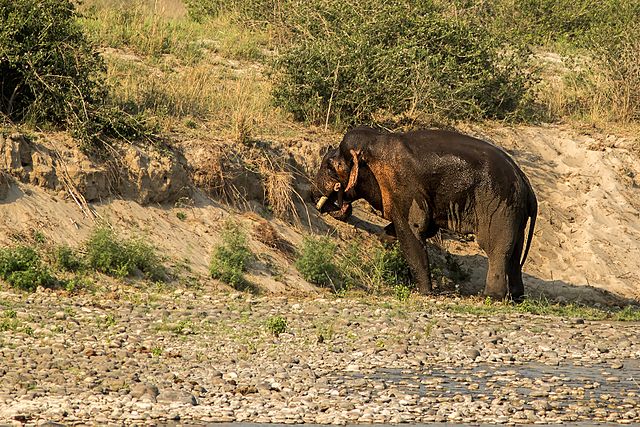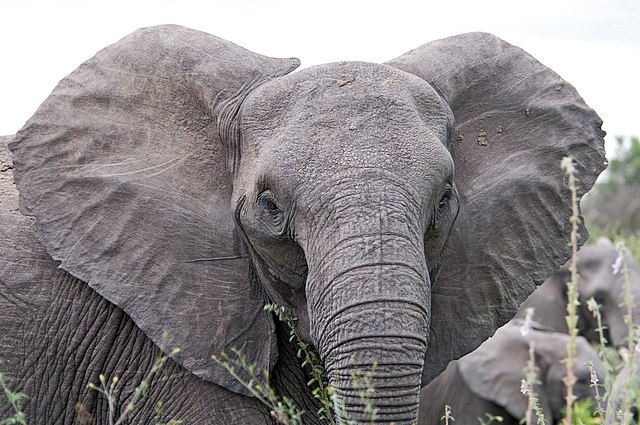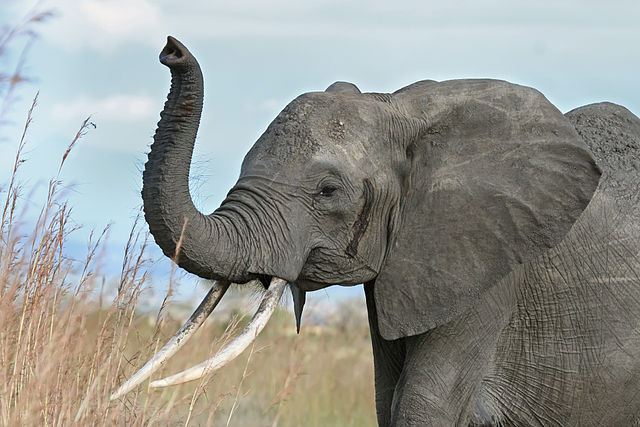Musth or must is a periodic condition in bull (male) elephants characterized by aggressive behavior and accompanied by a large rise in reproductive hormones.
Temporin secretion during musth
A wild Indian elephant in musth
An elephant in musth digging its tusks into the ground
An Asian elephant bull chained during musth, with discharge from the temporal glands.
Elephants are the largest living land animals. Three living species are currently recognised: the African bush elephant, the African forest elephant, and the Asian elephant. They are the only surviving members of the family Elephantidae and the order Proboscidea; extinct relatives include mammoths and mastodons. Distinctive features of elephants include a long proboscis called a trunk, tusks, large ear flaps, pillar-like legs, and tough but sensitive grey skin. The trunk is prehensile, bringing food and water to the mouth and grasping objects. Tusks, which are derived from the incisor teeth, serve both as weapons and as tools for moving objects and digging. The large ear flaps assist in maintaining a constant body temperature as well as in communication. African elephants have larger ears and concave backs, whereas Asian elephants have smaller ears and convex or level backs.
Elephant
African bush elephant skeleton
African bush elephant with ears spread in a threat or attentive position; note the visible blood vessels
African bush elephant with its trunk raised, a behaviour often adopted when trumpeting








